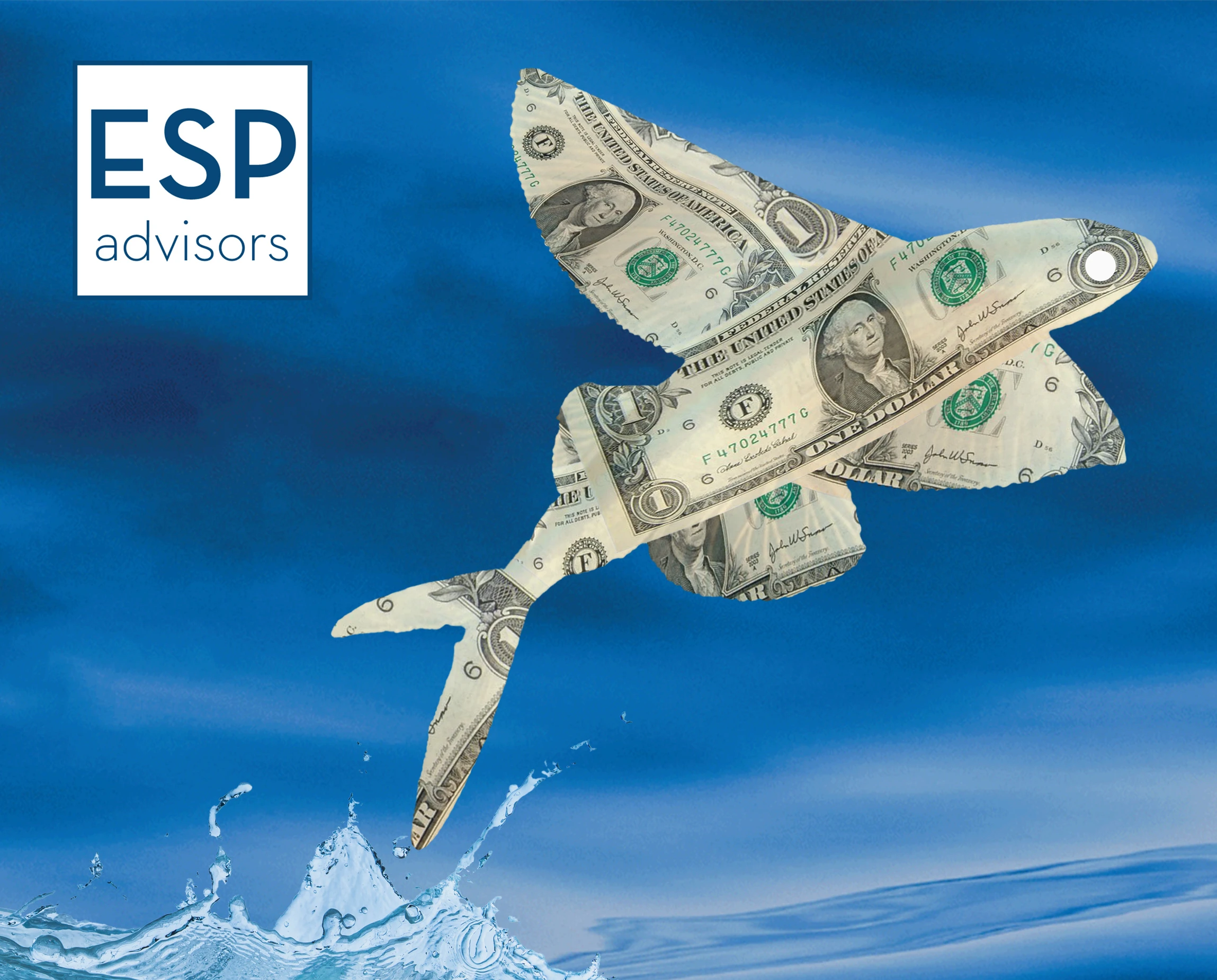After several fits and starts, Congress passed a stopgap funding bill today to avoid a government shutdown and keep federal agencies open until December 16, 2022. The stopgap bill funds the government at last year’s levels, but it remains to be seen how Congress will fund federal priorities in fiscal year 2023 (FY23).
Appropriators and their staff will be working hard to negotiate and pass final versions of their funding bills by the December deadline. While it’s tough to say with certainty what might be in the final spending package for oceans (or if there will be one!), the House’s version of the bills and the Senate draft bills provide helpful insight.
Our summary of the House bills, which includes a simplified synopsis of the government funding process, can be found here.
Where are we now?
At the end of July 2022, the Senate Appropriations Committee released its draft FY23 appropriations bills, which are different from the House bills. While Democrats and Republicans have yet to agree on topline spending numbers, these draft bills provide an intriguing look into the priorities of Senate appropriators and their colleagues.
Because both the House and Senate draft appropriations bills were written in the absence of a bipartisan agreement on topline spending limits, the numbers within them are likely to shift before final passage. This will be a continued topic of debate across the aisle in the coming months. The politics at play include Republican angst over recently passed portions of the Democrats’ agenda, looming midterm elections and potential power shifts in Congress, and the upcoming retirement of both Senate Appropriations Committee leaders Chair Patrick Leahy (D-VT) and Vice Chair Richard Shelby (R-AL).
If Republicans take control of either chamber of Congress in the November election, history tells us they will want to pause on appropriations until they assume control of the new Congress in January. However, Leahy and Shelby are determined to get the funding package done before year’s end. The tea leaves are leaning towards passage, but we will see what happens as discussions continue.
What’s in it for oceans?
Read on for our highlights and analysis of ocean- and environment-related provisions in the draft Senate appropriations bills and how they compare to the House marks.
NOAA
The Senate Committee recommends a total of $6.512 billion in discretionary funds for The National Oceanic and Atmospheric Association (NOAA), which is $633 million above what was enacted in fiscal year 2022 (FY22), about $353 million below the President’s Budget request, and $275 million below what is outlined in the House bill. The Senate bill also includes $61.9 million in community project funding, earmarked for specific projects. This is about $6 million more than the House bill would provide.
There is a major focus in both the Senate and House appropriations bills on uncrewed systems at NOAA, but the two differ significantly in their recommendations for how to implement related programs at the agency. The House bill would establish a new Uncrewed Systems Research Transition Office within the Oceanic and Atmospheric Research (OAR) line. The Senate bill, on the other hand, would invest an additional $20 million in the existing Autonomous Uncrewed Technology Operations (AUTO) office under the Office of Marine and Aviation Operations (OMAO) line, bringing total funding to $34 million. The Senate language also includes a directive to use increased funding for agency-wide data acquisition in support of relevant research and operational missions including hurricane intensity forecasting, fishery surveys, ocean exploration, and hydrographic surveys.
National Ocean Service (NOS)
The Senate recommendation provides almost $701 million for NOS, a $63.3 million increase and $14 million above the President’s budget request. It also encourages National Centers for Coastal Ocean Science (NCCOS) to expand its efforts related to offshore wind and coastal sustainability and resilience.
Additional highlights include:
- $5 million increase in funding for Coastal Zone Management Grants
- $5 million less than the House bill
- $2 million increase for the coral reef program
- $1 million more than the House bill and $1.6 million more than requested
- $9 million increase for Sanctuaries and Marine Protected Areas
- $2 million more than the House bill and almost $17 million less than requested
- $4.8 million increase for National Estuarine Research Reserve System
- $3.3 million more than the House bill and $6 million more than requested
- $5 million increase for the Integrated Ocean Observing System (IOOS) Regional Associations
- $2 million more than the House bill and $5.5 million more than requested
- $1.5 million increase for hydrographic surveys and contracts
- $1.5 million more than the House bill and $11 million less than requested
National Marine Fisheries Service (NMFS)
The Senate Committee recommends $1.11 billion for NOAA Fisheries, a $94 million increase and $3.7 million above the request. It includes a directive to utilize the AUTO program to supplement fish surveys and encouragement to utilize public-private partnerships. If passed, this bill would also require a report within 180 days that details how the Fisheries Promotion Fund could support a comprehensive, nationwide seafood marketing and public education campaign, as recommended by the National Seafood Council.
Additional highlights include:
- $25.7 million increase for fisheries data
- $500,000 less than the House bill and $1.14 million more than requested
- $4 million increase each for Illegal, Unreported, and Unregulated (IUU) Fishing enforcement and Seafood Import Monitoring Program (SIMP)
- $3 million more than the House bill
- $4 million increase for marine aquaculture over FY22 enacted levels, the President’s budget request, and the House bill
- $7.87 million increase for enforcement
- $5.6 million more than the House bill and $5.7 million more than requested
- $1 million to pilot an operational system for climate-ready fishery management
- $2 million increase for electronic monitoring and reporting
Oceanic and Atmospheric Research (OAR)
The Committee recommends $687.8 million for OAR, a $117 million increase. The bill encourages NOAA to consider establishment of a Resilience and Adaptation Cooperative Institute to provide additional research, data collection, and applied science activities.
Additional highlights include:
- $4 million increase for the National Oceanographic Partnership Program (NOPP), $4.5 million more than the House bill and $5 million more than requested, which includes:
- $3 million directed towards ocean-based carbon dioxide removal technologies
- Encouragement to expand deployment of federal and non-federal observing systems to assess ocean noise
- $15 million increase for the National Sea Grant College Program, $8 million more than the House bill and $14 million more than requested, which includes:
- A request to increase coastal resilience activities across all State programs
- $2 million – double the funds provided in the House bill – to launch the Young Fisherman’s Development Grant Program
- $7 million directed funding towards American Lobster research, highly migratory species, and PFAS chemical research
- $10.6 million increase for Sustained Ocean Observations and monitoring
- $3.5 million more than the House bill and $7 million more than requested
- $3.5 million increase to accelerate America’s Ocean Exploration Program
- $500,000 less than the House bill and $3.1 million more than requested
Environmental Protection Agency (EPA)
The Senate Committee recommends $10.641 billion for EPA, a $1 billion increase that is nearly 1 billion less than the House bill and $1.3 billion below the President’s request. This includes:
- $25 million increase for National Estuary Program and Coastal Waterways, $9 million more than the House bill, which includes a $50,000 increase for each of the 28 National Estuary Programs but does not match the House’s $2 million increase for competitive grants
Bureau of Ocean Energy Management (BOEM)
The Committee recommends $232.6 million for BOEM, a $25.8 million increase that is $4.9 million below the request. This includes:
- $5 million to establish a Center for Paleoenvironmental Records of Extreme Events to inform risk analysis and long-term forecasts of extreme events
US Fish and Wildlife Service (USFWS)
The committee recommends $1.8 billion for USFWS, a $387 million increase. This includes:
- $35 million increase for Ecological Services
- $11.6 million increase for Conservation and Restoration
- $31.2 million increase for the National Wildlife Refuge System
Department of Energy (DOE)
The recommendation provides $49.3 billion for DOE, which is $4.5 billion above current levels. Cross-cutting initiatives such as grid modernization, carbon dioxide removal, equity and justice, critical minerals, industrial decarbonization, and decarbonization of industry and transportation sectors are included in the bill. This includes:
- $400 million to further research, development, testing, and demonstration of innovative technologies for low- or no-emission alternatives for shipping, aviation, agriculture, and long distance transportation
- $567.7 million for Advanced Research Projects Agency-Energy (ARPA-E)
- $210 million for wind energy
- $142 million for marine energy, including $60 million for industry-led competitive solicitations to increase energy capture, improve reliability, and assess and monitor environmental effects of marine energy systems at a variety of scales
- $24 million for the Powering the Blue Economy initiative, leveraging existing core capabilities at national laboratories
- $5 million for the DOE Marine and Coastal Research Laboratory
- $22 million to complete construction of grid connected wave energy test facility
- $5 million to continue operations at the Atlantic Marine Energy Center to accelerate the transition of wave and tidal energy technologies to market
- Encouragement for the Water Power Technology Office to focus on integrating clean energy systems for remote communities and port electrification, including demonstration of marine, distributed wind, solar, energy storage, improved microgrids, and local production of zero-carbon fuels
Next Steps
Appropriators and their staff will work to agree on topline spending numbers and then revise their bills based on these limits. If they can’t agree, there may be another stopgap funding bill to extend government funding into the next year. If congressional leaders can secure a compromise, the final spending package will likely include lower spending numbers than were included in the Senate drafts. Final text will likely be released and passed quickly in December after extended closed-door negotiations. Stay tuned for updates!

